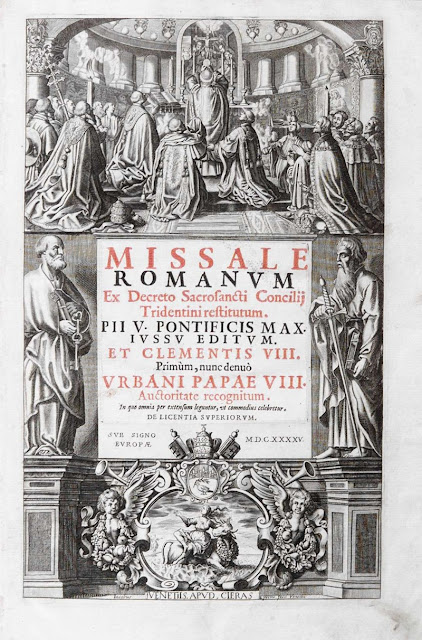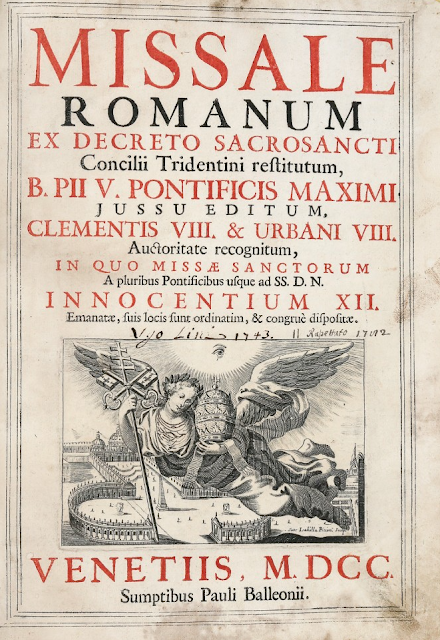Our first example comes from a Missale Romanum published in 1740. This particular edition includes a frontispiece which depicts an Old Testament theme: the Sacrifice of Abraham. For those who find the inclusion of an Old Testament scene for a missal "curious" it is actually entirely apropos as the (near) sacrifice of his son Isaac by Abraham is, of course, a "type" foreshadowing the sacrifice of Christ, which itself is fundamentally related to the Mass of course. Small details like these teach.
Some missals also included a secondary type of title page, such as this from 1654 showing a depiction of St. Mark with his symbolic lion. The missal was published in Venice so it should come as little surprise to see this emphasis on St. Mark, the patron of that stately city-state.
Speaking of the Evangelists, this 1641 frontispiece depicts all four evangelists with their respective symbols:
Some altar missals include scenes which are explicitly liturgical in nature, such as this edition of the missal, published in 1800, which depicts a pope opening a holy door:
This 1645 edition of the missal includes, amongst more usual inclusions like Ss. Peter and Paul, an illustration of a Solemn Pontifical Mass.
Our final consideration is taken from a missal published in 1700, showing an angel holding papal symbols with St. Peter's Basilica behind. An interesting inclusion in this particular imagery is that of the all-seeing eye -- frequently thought to be exclusively occultist in nature, but actually also a symbol that was popularly used in a Christian context in previous centuries.






















